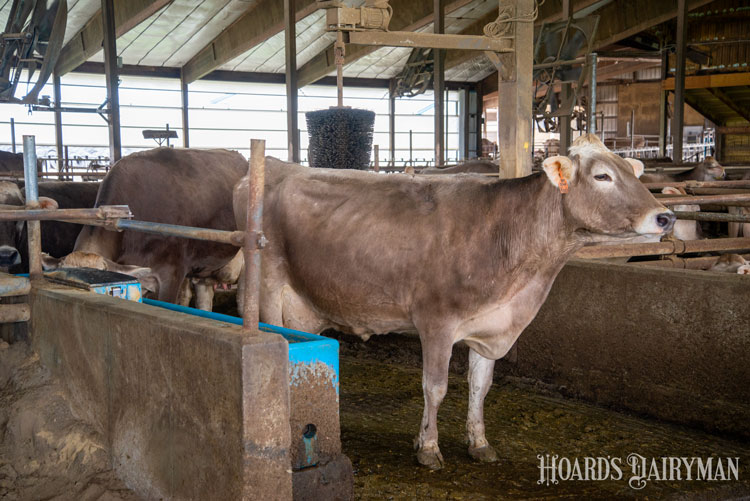
As food producers, processors, marketers, distributors, and consumers look to effectively manage their environmental footprint and social impact, the sustainability of the entire dairy industry is under examination. Fortunately, dairy has a largely untold portion of that story: genomics.
Genomics has enhanced sustainability as new generations of dairy cows need less land and water to produce more milk, butterfat, and protein via genetic improvement with each passing year. At the onset of genomics, the U.S. had 9.3 million cows; that number has grown less than 1% some 14 years later. Yet the national dairy herd produces 19.2% more pounds of milk and 32.2% more pounds of butterfat than it did in 2008. Genetics and genomics together have made a significant contribution as have better feeding, cow care, and other management attributes.
Taking a step back in time
Since the introduction of cryogenically frozen bull semen in the 1950s, dairy farmers have been using artificial insemination (A.I.) to improve the next generation of their dairy herds and enhance farm safety by eliminating mature bulls from their farmsteads.
During the next six decades, genetic improvement largely remained stable as elaborate progeny testing programs eventually identified the next generations of elite bulls over the course of five to eight years. That all changed in 2008 when genomics was introduced to the dairy industry.
Genomics — the comparison of an individual animal’s DNA to the phenotypic performance of the entire population — reduced the generation interval with minimal losses in accuracy. This accuracy, along with a shorter generation interval and more selection intensity, have been the most important reasons for improvement in milk, butterfat, and protein production; enhanced cow health; and fostered cow longevity.
Of course, this all took place because the dairy cow is the most studied domestic animal on the planet. The 123 million actual performance records gathered over the past century by USDA and the Council on Dairy Cattle Breeding (CDCB) served as the foundational fuel to power the new age, DNA-based, genomic predictions. That, in turn, enhanced predictive accuracy for dairy cattle genetics, which jumped from the 30% range in newborn calves prior to genomics to over 70% when taking a DNA test and comparing it to the overall database of records.
Let’s put this progress into dollars and cents.
On an annual basis, the Holstein bulls that sire the next generation in the genomic era improve by $83 annually when measured on the 40-trait net merit (NM$) index. That’s a six-fold gain when compared to the pre-genomic era gains that were closer to $13. Calculations by CDCB’s George Wiggans indicate that genomic selection has delivered $70 in value per cow per year. When extrapolated over the U.S. dairy herd with 9.4 million milk cows, genomics has delivered a $329 million net annual gain on the sustainability front.

The genetic super cow isn’t in sight
Could genetic improvement be reaching its ceiling?
We’re not even close, based on calculations done by Paul VanRaden, a senior research geneticist with USDA’s Animal Genomics and Improvement Laboratory (AGIL), this month. In taking the most elite haplotypes (genes) from all 7 million Holsteins in the genomic database, the best possible combination would yield an animal with $5,772 NM$.
That lofty number is far away from the top Holstein bull currently in the marketplace at $1,361 NM$. With those numbers in mind, the dairy community is only 24% of the way to breeding the perfect Holstein cow. That leaves a 324% or three-fold topside for future genetic improvement.
This analysis only considers current genetic evaluations. Genomic science can identify new traits that one day could help reduce methane production and the carbon footprint. The feed saved trait is just the tip of the iceberg.
To learn more about this important topic, read “Dairy cattle genomics is quietly improving sustainability.”








